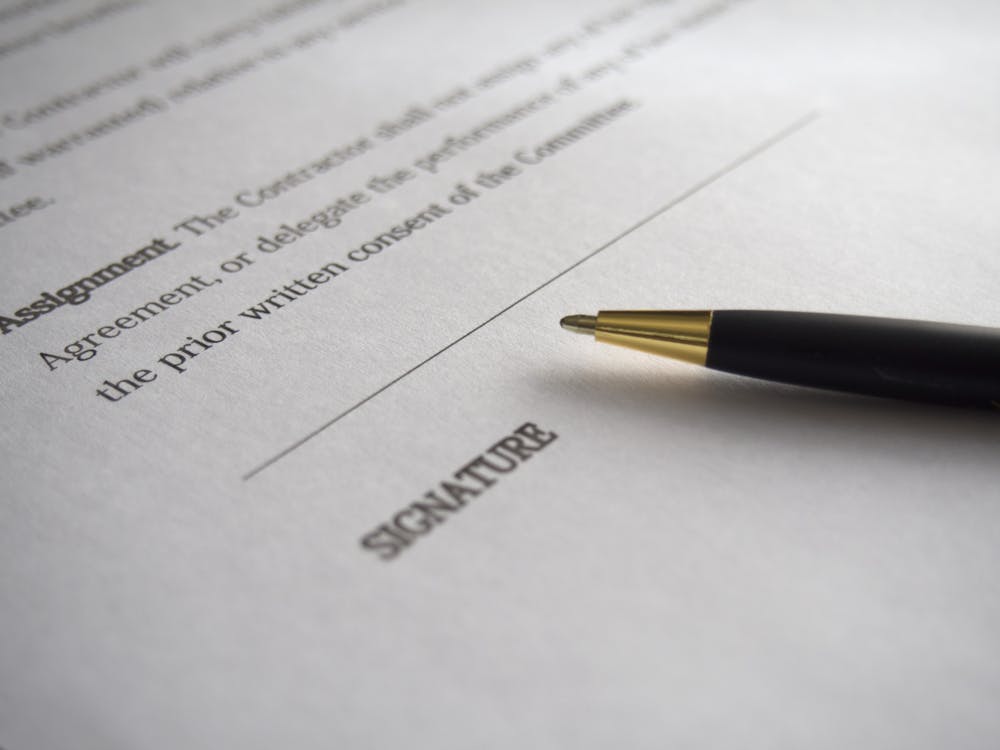When you’re freelancing art, you don’t have a lot of the same protections as a normal job has. You’re your own marketing, sales, and production team.
That can make creating a piece where you don’t get paid especially devastating– not only do you not get the money, but the time you spent making a piece could have gone toward someone who would actually pay!
What are some things you can do to prevent getting scammed? We have a few tips to help you out!
1. Never Work Before You Are Paid
If you don’t read any further, never forget this: If a commissioner is unwilling to send you money ahead of commission delivery, don’t work with them.
Once your art has been delivered to a client without payment, you have little recourse to recuperate that money.
You may be able to get it back in court, but it won’t be worth the effort unless the amount of money involved is significant and you’ve got a written agreement (more on that later!)
If you’re just starting to take commissions, this can leave you with a puzzle: How do you convince commissioners you won’t scam them?
Without an established reputation, people will not know if they can trust you.
One way you might do so is by having them pay in installments– charge for an initial sketch, and then more to refine it, and more to finish it up or edit it.
Make sure that you don’t do more work than they’ve paid for at any given time.
The downside is the amount of back and forth can be time consuming, and it means you’re keeping track of multiple payments for each submission instead of one.

Art by Betsy the Beaver
Did you know…
We have our own solution to this problem– Artconomy Shield! Artconomy Shield is our art payment service. When someone wants to commission you, they pay through our site, with a guarantee they’ll get their money back if you don’t complete the work. This allows you to provide your client with peace of mind– and gives you the assurance that the money will arrive.
2. Avoid Doing work ‘For the Exposure’
A common argument clients may use is that you should perform work for them for free in order to get exposure. Be wary of anyone claiming this.

Courtesy Pexels via Viktoria Alipatova
Anyone who has an audience large enough for exposure to be a form of payment has a budget which can accommodate you.
It is in their interest to cut costs so they can spend money elsewhere. Putting the squeeze on an artist to reduce costs is a common strategy– because it often works.
Know your worth and don’t go without payment.
There are some exceptions, of course– if you’re volunteering at a charity, and the money that would pay you would otherwise go to a cause you care about, that’s perfectly fine!
There are successful artists who have done some free work to get their name out there, but it only works through a deliberate, intentional marketing strategy where they took the initiative, with specific parameters and boundaries around it– i.e, a retweet raffle.
If a client is the one trying to convince you that you should work for free, don’t.
3. Have a Written Agreement

The biggest source of issues between artists and commissioners is mismanaged expectations.
You are not a vending machine someone inserts money into and from which art comes out. There are many peripheral concerns going into a commission that need to be answered ahead of time.
For example:
- How many revisions will you include?
- What type of commission are they asking for? Sketch? Inks? Full color?
- How long can they expect you to take to complete the piece?
- What information do you require to get started? (References, descriptions, etc)
- How do you take payment, and on what schedule do you expect to receive it?
- What are you unwilling or unable to draw?
- What legal expectations should be set around the finished piece? Who will own the rights to the piece?
Writing up a solid terms of service and making sure to send it to all commissioners is essential to managing expectations.
Post it anywhere you list commissions for sale.
Did you know…
Artconomy.com has a premade commissioner agreement attached to each sale, a refund policy, and allows you to specify your own additional terms in your account settings?
When listing products on Artconomy, you can detail out what you’re offering, and how long you expect it to take, so there’s no confusion about what you’re offering clients.
You can even adjust the price and turnaround time per commission if the circumstances require.
Once you have a written agreement that you share with commissioners, you’ll have more confidence to speak up when commissioners break the rules, and more authority– after all, they agreed to your terms when they commissioned you!
Also, if you ever end up in a legal dispute with your commissioner, having a written agreement can be incredibly helpful, even if it’s only a basic one you wrote up yourself, and not drafted by a lawyer.*

Courtesy Pexels via Pixabay
*Note: Artconomy is not a legal service provider and this is not legal advice. There are some circumstances where a written agreement may be invalid, and only a lawyer can give you actionable advice on this.
4. Beware Promises of Royalties
A common way people get an artist to work for little to nothing is to ask them to collaborate on a large project with a promise that they’ll make money on the royalties afterward.
Far too often, these projects end up being massive wastes of time, never completing, and never paying out.
Making money off of your art is difficult.
So difficult, we made Artconomy.com to make it easier, but it still takes work.
Anyone who promises you that you will get paid off the royalties for your art later is saying not only will they be able to make enough money to pay themselves off of the larger project, but to pay you as well. That’s a big claim.

Image courtesy Pexels via Rawpixel
Not all of these opportunities are bunk, but the trick is in determining which are worth rolling the dice for.
Here are some key things to ask yourself about the next game or book someone tries to get you to draw for:
- Does the project manager/author have a history of completing and making money on projects like these?
- If it’s an author, do they already have an editor and/or publisher?
- How much can they pay up front? Any royalties they’re offering could end up being zero if they fail to complete and market their product. They should be able to pay some amount now.
- Remembering the previous section– are they offering a written agreement?
- Does the written agreement include a clearly defined scope of work– including what assets need to be created, in what format, and under what conditions your contribution will be considered ‘done’?
- Knowing what you know about these people, are you willing to bet on their success?
If after reviewing these questions, you don’t feel comfortable, turn down the work and look for something more sure.
5. Don’t Look Like an Easy Target

Courtesy Pexels via PhotoMIX Ltd.
You are a professional– and you need to look like one.
If you look like you have yourself put together, potential scammers are less likely to target you– they’d much rather go for softer targets.
Do you have corporate clients you visit in person? Wear (at least) business casual when going to meet them.
When meeting with clients, stand up straight, speak clearly and politely, and look them in the eyes. Don’t slouch, mumble, or avert your gaze.
That will give them the impression you can be pushed around.
Even if your clients are all online, try sitting up straight when sending messages to them.
You’ll feel more confident. A study from Harvard and Columbia University showed that adopting a more confident posture can make you feel more powerful and in control.
While listing products on Artconomy can give you a professional storefront you can share, what you write in your biography and descriptions greatly affects how you’re perceived. Do you…
- Make spelling and grammar mistakes?
- Write a lot of self-deprecating comments?
- Write from a place of anger or irritation?

Doing any of these on your professional-facing profile can impact your sales, and can signal to others you may not have your ducks in a row.
This is not to say you have to be perfect– but you should always show your best face when interacting with clients.
Try this:
Make a trade with a writer friend! Ask them to look over the tone and content of your professional profiles on Artconomy and social media sites.
Ask them what grammar mistakes you frequently make and how to fix them. Offer them a commission in return!
Work on your communication style to avoid these mistakes so that when you’re interacting with clients you keep the tone consistent.
In addition, make sure that if a customer is saying something that gets you riled up or frightened, take a break before responding to them.
When you’re anxious, it’s hard to see when someone may be pushing on you to see if you’ll roll over.
Give your best, be polite, and, armed with a good payment policy and terms of service, stay professional.
Go Forth!

Now that you have a better idea how to avoid getting scammed, push forward and do your best. Keep on creating!


